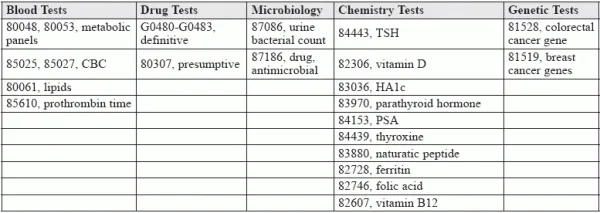Steer Clear of OIG Action on Lab-Test Fraud
High costs and usage spur fed oversight. The 25 most-frequently ordered lab tests are under the fed’s microscope for false claims and kickbacks. In fact, the OIG just added the subject, “Monitoring Medicare Payments for Clinical Diagnostic Laboratory Tests-Mandatory Review,” to its list of active Work Plan items in May. Read on to make sure your lab has a clean slate if the focus turns to you. Note These Recent Stats The OIG spotlight is based partly on the incriminating results in a Comprehensive Error Rate Testing (CERT) study. Lab tests topped the list in the report, Top 20 Service Types with Highest Improper Payments: Part B. The records showed that lab tests accounted for 3.1 percent of the overall improper payment rate, with a whopping $1.12 billion improperly paid out. There’s more: CMS paid $6.8 billion for Part B lab tests in 2016, according to a recent report from the Health Care Fraud and Abuse Control (HCFAC) Program operated jointly by OIG and the Department of Justice (DOJ). The report states that “the top 25 tests … totaled $4.3 billion and represented 63 percent of all Medicare payments for lab tests in 2016.” Additionally, “more than half of [the] payments for the top 25 tests went to 1 percent of [the] labs,” noted the HCFAC findings. Expect reduction: Another reason the OIG spotlight falls on labs is the expected 10 percent reduction in the $7 billion that Medicare pays annually for lab tests. The reduction is based on the 2018 Clinical Lab Fee Schedule (CLFS) adjustments made to comply with the Protecting Access to Medicare Act’s (PAMA) mandate to base the lab fee schedule on private payer rates. The HCFAC report indicates that the feds will be watching this year to see if the Medicare payment does, in fact, change, specifically for the top 25 tests. What the OIG finds may factor into a need for future enforcement actions against fraudsters, the HCFAC report suggests. Look for side effects: Another factor that may impact how much overall lab-test Medicare payment declines is the possibility that revaluation may also lead to cutbacks in testing availability and usage. “We are concerned that the cuts will eliminate small, independent laboratories in rural communities as well as clinical testing for patients in their physician’s office-based laboratory (POL),” says James L. Madara, MD, AMA executive vice president and CEO in a letter to the CMS administrator. Echoing that sentiment in an American Association for Clinical Chemistry letter to CMS, Michael J. Bennett PhD, FRCPath, FACB, DABCC, AACC president expressed concern that lower payment rates “ may force many laboratories to stop or significantly curtail their testing.” Know the Focus and Risks The lab tests slated for extreme OIG scrutiny are the most-ordered 25 tests. These include tests represented in the following table with a shortened descriptor: Warning: Whether providers willfully submit fraudulent claims or engage in kickback schemes related to lab work, the feds are watching and bringing significant penalties against both the clinicians and the labs they utilize. “Improper financial relationships between physicians and laboratories can distort a physicians’ best judgment for their patients, in addition to undermining patient health and trust,” said Chad Readler, Acting Assistant Attorney General for DOJ’s Civil Division in a release. “Executives and other individuals who break the law will be held personally accountable for their actions. Resources: 




